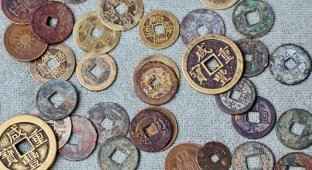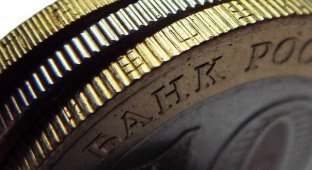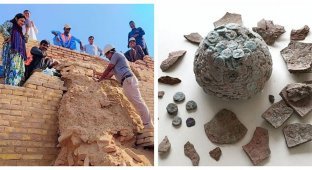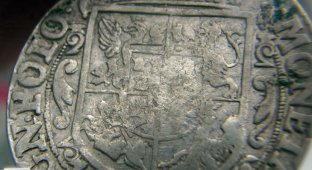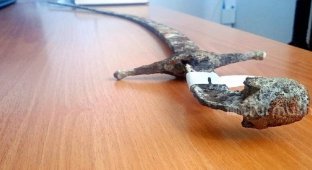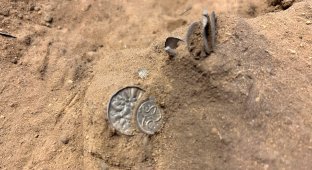Byzantine gold coin found in Norway (3 photos)
A treasure hunter using a metal detector discovered a 1,000-year-old gold coin while exploring the mountains in Västra Sliðr, a municipality in southern Norway. This type of small coin, known as "histamenon nomisma", first appeared around 960 AD. 
On one side of the coin there is a picture of Jesus with the Bible, on the other - Basil II and Constantine VII, two brothers who ruled the Byzantine Empire.
The western half of the Roman Empire collapsed in 476, and the Byzantine, or Eastern Roman Empire, survived for another millennium. 
One side of the gold coin depicts Jesus Christ. (Illustration: Martine Kaspersen, Innlandet Fylkeskommune)
Archaeologists believe that the coin was minted between 977 and 1025, during the reign of the brothers. The three dotted lines that encircle the edge of the coin are a design element commonly used during this period.
The artifact also contains two inscriptions. The first, written in Latin, reads: “Jesus Christ, King of Kings,” and the second, in Greek, reads: “Basilius and Constantine, Emperors of the Romans.” 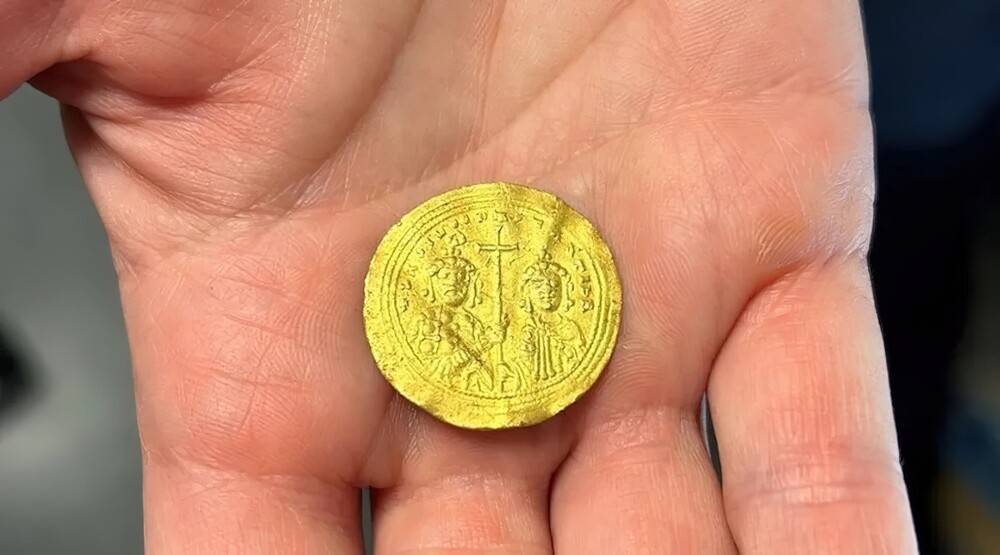
On the other side of the coin are images of Basil II and Constantine VII, two brothers who ruled the Byzantine Empire. (Illustration: Martina Kaspersen, Innlandet Fylkeskommune)
However, researchers do not know how the coin ended up on the mountainside. They suggested that it may have belonged to Harald Hardrada, also known as Harald III, who ruled Norway from 1045 to 1066. Before becoming king, Harald III served as a guard for the Byzantine emperor; According to the Miami Herald, it was common practice for the guards to obtain permission to "loot the palace after the death of the emperor." Perhaps this is a coin from the dowry of Harald III for his marriage to the daughter of the Kyiv prince Yaroslav the Wise. It could also be used for trade.
Archaeologists plan to return to the site of this interesting find in 2024 to conduct further excavations.












